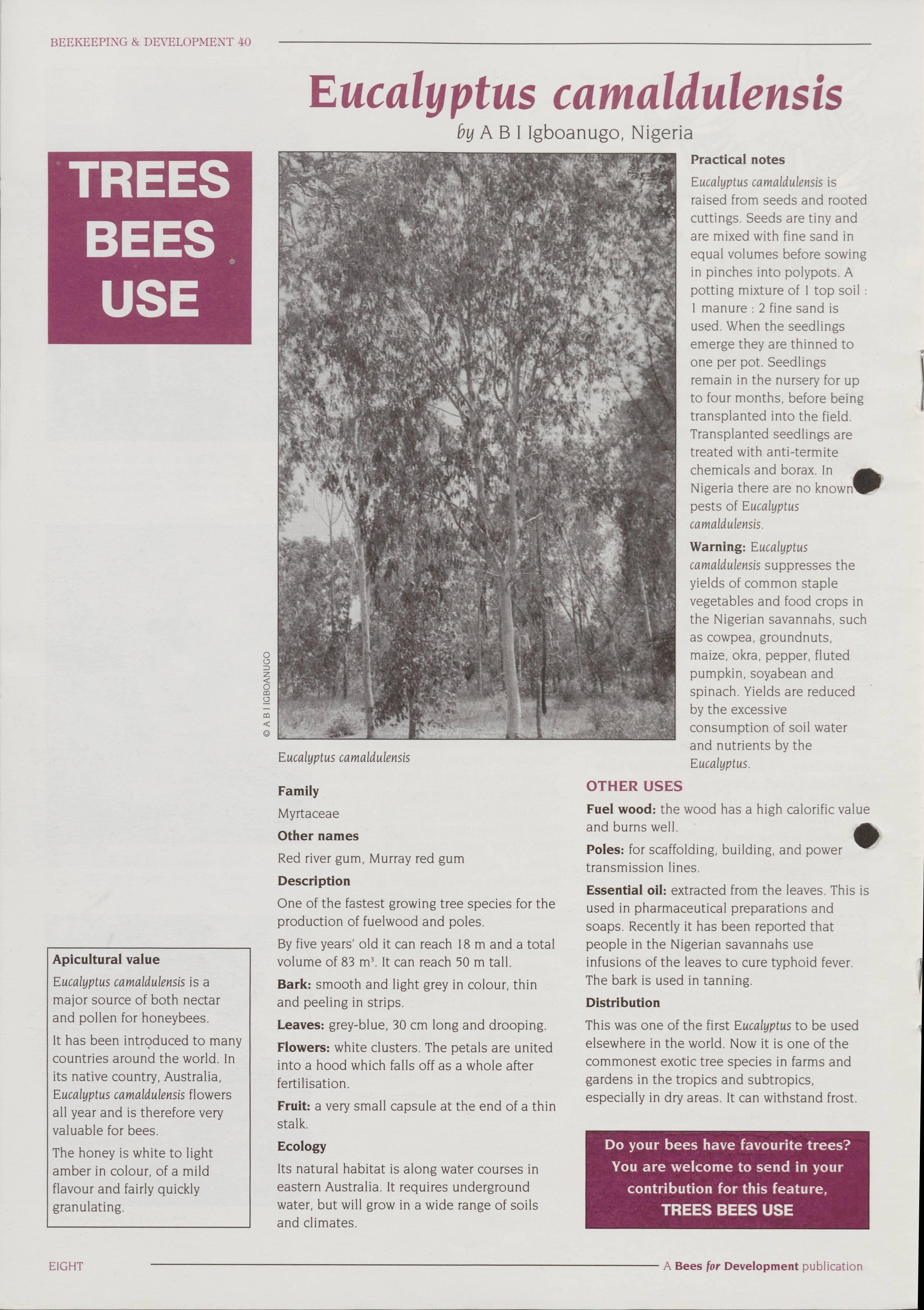
3 minute read
Trees bees use - Eucalyptus camaldulensis
by A B Igboanugo, Nigeria
Family
Myrtaceae
Other names
Red river gum, Murray red gum
Description
One of the fastest growing tree species for the production of fuelwood and poles.
By five years’ old it can reach 18 and total volume of 83 m³ . It can reach 50 tall.
Bark: smooth and light grey in colour, thin and peeling in strips.
Leaves: grey-blue, 30 cm long and drooping.
Flowers: white clusters. The petals are united into a hood which falls off as whole after fertilisation.
Fruit: very small capsule at the end of a thin stalk.
Ecology
Its natural habitat is along water courses in eastern Australia. It requires underground water, but will grow in wide range of soils and climates
Practical notes
Eucalyptus camaldulensis is raised from seeds and rooted cuttings. Seeds are tiny and are mixed with fine sand in equal volumes before sowing in pinches into polypots. A potting mixture of 1 top soil : 1 manure fine : 2 sand is used. When the seedlings emerge they are thinned to one per pot. Seedlings remain in the nursery for up to four months, before being transplanted into the field. Transplanted seedlings are treated with anti-termite chemicals and borax. In Nigeria there are no known pests of Eucalyptus camaldulensis.
Warning: Eucalyptus camaldulensis suppresses the yields of common staple vegetables and food crops in the Nigerian savannahs, such as cowpea, groundnuts, maize, okra, pepper, fluted pumpkin, soyabean and spinach. Yields are reduced by the excessive consumption of soil water and nutrients by the Eucalyptus.
OTHER USES
Fuel wood: the wood has a high calorific value and burns well.
Poles: for scaffolding, building, and power transmission lines.
Essential oil: extracted from the leaves. This is used in pharmaceutical preparations and soaps. Recently it has been reported that people in the Nigerian savannahs use infusions of the leaves to cure typhoid fever.
The bark is used in tanning.
Distribution This was one of the first Eucalyptus to be used elsewhere in the world. Now it is one of the commonest exotic tree species in farms and gardens in the tropics and subtropics, especially in dry areas. It can withstand frost.
Apicultural value
Eucalyptus camaldulensis is major source of both nectar and pollen for honeybees.
It has been introduced to many countries around the world. In its native country, Australia, Eucalyptus camaldulensis flowers all year and is therefore very valuable for bees.
The honey is white to light amber in colour, of a mild flavour and fairly quickly granulating.









